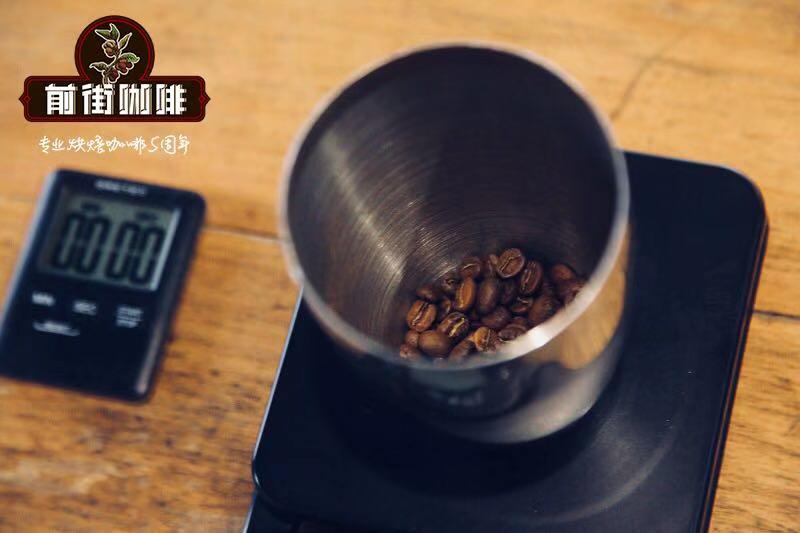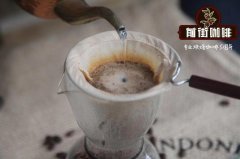What's good for individual coffee | do you know what well-known individual coffee beans have? let's find out.

Professional coffee knowledge exchange more coffee bean information please follow the coffee workshop (Wechat official account cafe_style)
Usually a single product of coffee beans is used as the raw material, and the roasting degree of coffee beans varies from light roasting to medium roasting to deep roasting. Most hand-brewed coffee is brewed in a filter cup. First, the coffee beans are ground into powder and then put into filter paper. After slowly injecting hot water, the coffee liquid extracted through the filter paper and filter cup drips slowly down, and a cup of hand-brewed coffee is finished.
But if you want to make a good cup of hand-made coffee, the key lies in grinding, water temperature, the ratio of coffee to water and so on. There will be more exquisite than machine making.
Coffee trees are only suitable for growing in the tropics or subtropics, so the zone between 25 degrees north and south latitudes is the most suitable for growing coffee. This coffee production zone is generally referred to as "coffee belt" or "coffee area". The ideal planting conditions of coffee trees are as follows: the temperature is between 15 ℃ and 25 ℃, and the annual rainfall must reach 1500mm~2000mm. At the same time, the rainfall time should be matched with the flowering cycle of coffee trees.
Of course, in addition to the coordination of seasons and rainfall, there should also be fertile soil. The most suitable soil for growing coffee should be fertile soil that is well drained and contains volcanic ash.
As for the ideal altitude of 1000m~2000m, it can be seen that the conditions for the cultivation of high-quality coffee are quite strict: sunlight, rainfall, soil, air temperature, as well as the way coffee beans are harvested and the production process will affect the quality of coffee itself.
African coffee
Flavor characteristics: charming acidity
African bean flavor: Ethiopian coffee has a strong orange flavor, while Kenya coffee has strong raspberry aromas, sour aromas of black plum juice and grapefruit, and sweet sugarcane aromas. The orange aroma of Ethiopian coffee and the raspberry flavor of Kenyan coffee are the most important features of African beans, and they are also the most attractive to coffee fans.
African coffee is generally characterized by strong aroma and charming acidity, its sour brightness is lively and exhilarating, but African coffee is often slightly thin and not very sweet. African coffee due to drought and lack of water, mostly use the sun method to deal with raw beans, the bean shape is often uneven and beautiful, and the defect rate is high.
Representative:
Kenya
Kenya grows high-quality Arabica coffee beans, which absorb almost the essence of coffee cherries, with a slightly sour, thick aroma, and are very popular among Europeans, especially in Britain. Kenya Coffee surpassed Costa Rican coffee and became one of the most popular coffees. With the aroma of mellow wine and flowers, the texture is full, small and round, because it is easy to roll in the pot, it can be roasted evenly, suitable for home baking.
Kenyan AA coffee is the best coffee in Africa, with a thick and full texture, slightly acidic, smooth taste and slightly alcoholic aroma. AA represents the highest quality coffee beans in Kenya.
[Kenya AA] (water washing is shallow)-angular strong fruit acid, and this Kenya, let me feel gentle, like facing the sea, the feeling of breeze blowing. Unlike Kenya, which used to be berry-based, this time it has a delicate red wine with sour fruit, cherry sweetness, BlackBerry lips and teeth, and a tail of black plum and sugar. Ice droplets are nice!
Ethiopia
Ethiopia is an agricultural country with a history and tradition of coffee origin. The place where the name "coffee" comes from is Kafa in the southwest, while the Sidamo place in the south is the main producing area, and Yega Xuefei is one of the southern producing areas of Sidamo. Eastern Highland Hara is as famous as the coffee name "Hara".
Ethiopia is an important coffee producer with about 12 million people engaged in coffee production and is a major exporter of Arab coffee beans in Africa. The high-quality coffee here is of excellent quality and is worth looking for. It has a soft taste, with wild flavor of wine, and slightly sour taste, unforgettable after drinking.
Yejaschuffe itself is a small town of about 20, 000 people, and the three neighboring producing areas, Wenago, Kochere and Gelena Abaya, are also classified as Yejasuffe because they produce coffee with almost the same flavor as Yejasuffe. Yejacheffe is similar to the neighboring Sidamo in terms of culture and geography, but it seems to be more favored to enjoy the advantageous conditions, top-quality Yega Chefe coffee with floral aromas, bright citrus acidity, lemon flavours and silky taste.
[Yechuefi aricha, Ethiopia] (light sun baking)-light fermented wine, sweet orange, spices, honey sweet, Aricha processing plant sun Ariga is the highest grade of G1 by ECX, from raw bean appearance, consistency, freshness to dry aroma and flavor are excellent.
[Yega Sherphine Woka, Ethiopia] (slightly roasted with water)-lemon, kumquat and white grape juice, the Waka Cooperative joins the famous Yejia Sheffield Coffee Farmers Cooperative Union to produce the highest grade G1 in Ethiopia.
Sidamo
[Sidamo 90+levelup candlelight] (light sun roasting)-rich aromas of berries, flowers, grapes and a variety of tropical fruits, Ninety plus is an internationally renowned coffee bean production and sales company, and is famous for providing rare and unique coffee beans, the top and unique representative of raw beans.
Central and South America
Characteristics of taste: balanced, moderate acidity and mellow taste
The flavor of Central and South American beans: generally speaking, the flavor is relatively regular. The Brazilian coffee is soft and sweet, while the Costa Rican coffee is gentle and supple, with a blend of sour, sweet and chocolate aromas.
Panamanian coffee has strong aromas of citrus, jasmine, almond, mango and nectar, with bright acidity and a strong resemblance to Ethiopia's national treasure bean Yega Sheffield. Pacamara coffee has a pleasant spicy aroma, a hint of ginger, sour and fruity. The most important feature of Nicaraguan coffee is its charming almond flavor, which tastes stuffy.
The overall flavor of Latin American coffee is famous for its balance, and all the flavors in the coffee can be found in Latin American coffee. The widespread use of wet treatment of raw beans is also one of the characteristics of Latin American coffee, good processing also makes its beans larger and more uniform than African coffee, and the defect rate is lower.
[representative]:
Colombia
Colombia is one of the largest producers of high-quality coffee in the world, a bright pearl in the world coffee map and a coffee land blessed by God. Arabica coffee is grown on steep slopes 800 to 1900 meters above sea level and is hand-picked and washed.
[Santa Rita, Colombia] (deeply baked in water)-sucrose, clean, medium thickness, Santa Rita Manor, located in Antioquia, Colombia, treats coffee in the traditional way: picking coffee cherries by hand. Then the coffee fruit is washed and dried in a scaffolding. The environment around the Andes makes this coffee-growing area rich in volcanic soil and rich in water resources.
END
Important Notice :
前街咖啡 FrontStreet Coffee has moved to new addredd:
FrontStreet Coffee Address: 315,Donghua East Road,GuangZhou
Tel:020 38364473
- Prev

Introduction to the flavor and taste of green peacock in Vietnam and Burma boutique coffee washing treatment
Professional coffee knowledge exchange more coffee bean information please follow the coffee workshop (Wechat official account cafe_style) has a vast continent in Asia, the origin of coffee can be traced back to many versions. The most famous of these is Indonesia, which is famous for its earthy or smoky smell. Some people in the industry said that in fact, beans with rich fruit flavor and taste can also be found in India.
- Next

Do you know what is single-origin coffee? what are the better flavor characteristics of single-product coffee?
Professional coffee knowledge exchange more coffee bean information Please pay attention to the coffee workshop (Wechat official account cafe_style) individual coffee can be traced back to the origin of coffee, not only the country of coffee production, and even the land where coffee is produced, through knowing the coffee owner, going deep into the origin of coffee, understanding the story of the origin of coffee from the source, and purchasing raw beans. Different regions, coffee.
Related
- Beginners will see the "Coffee pull flower" guide!
- What is the difference between ice blog purified milk and ordinary milk coffee?
- Why is the Philippines the largest producer of crops in Liberia?
- For coffee extraction, should the fine powder be retained?
- How does extracted espresso fill pressed powder? How much strength does it take to press the powder?
- How to make jasmine cold extract coffee? Is the jasmine + latte good?
- Will this little toy really make the coffee taste better? How does Lily Drip affect coffee extraction?
- Will the action of slapping the filter cup also affect coffee extraction?
- What's the difference between powder-to-water ratio and powder-to-liquid ratio?
- What is the Ethiopian local species? What does it have to do with Heirloom native species?

